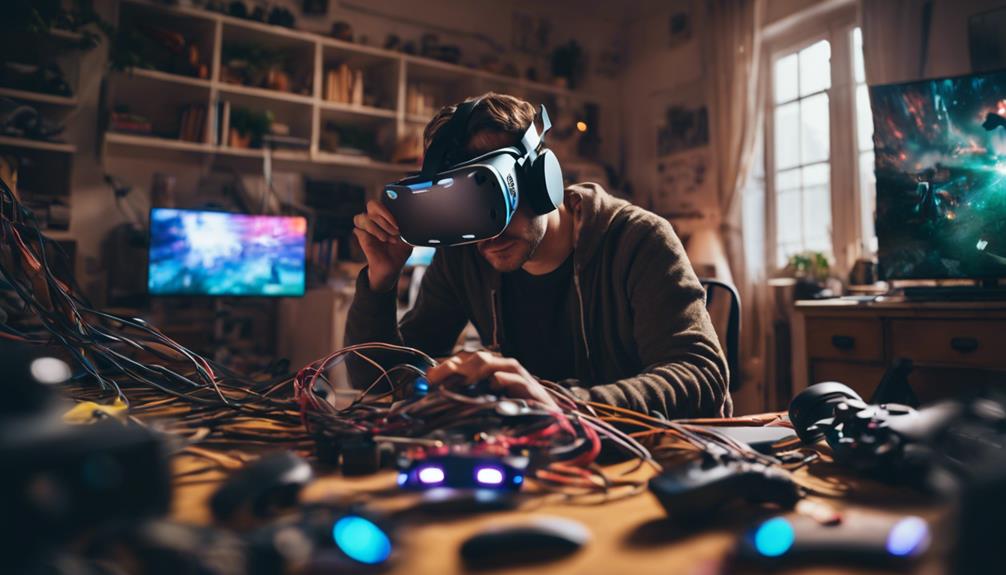In the rapidly evolving landscape of technology, desktop gadgets have emerged as a significant aspect of personal computing. These small applications, often customizable, serve various purposes—from enhancing productivity to providing entertainment. This article explores the evolution of PC desktop gadgets, their functionalities, and the impact they have on our daily lives.
What Are PC Desktop Gadgets?
PC desktop gadgets are mini-applications that run on a user’s desktop, providing quick access to information and tools without the need to open full-fledged programs. They can display weather forecasts, system performance metrics, news updates, or even interactive games. Initially popularized by Microsoft Windows Vista and Windows 7, desktop gadgets have since evolved and diversified across various platforms.Gizmos And Gadgets A Plenty
The Evolution of Desktop Gadgets
The concept of desktop gadgets traces back to the early 2000s when the rise of the internet and multimedia capabilities began to shape user interfaces. Here’s a brief overview of the evolution:
- Early 2000s: The introduction of desktop widgets in operating systems like Mac OS X marked the beginning of user-friendly desktop applications.
- Windows Vista (2006): Microsoft launched its own set of gadgets, allowing users to personalize their desktops with tools like clocks, calendars, and media players.
- Windows 7 (2009): The popularity of gadgets surged, with a wider array of options available, including third-party applications.
- Decline in Popularity: Following security concerns and the rise of more advanced mobile applications, the use of desktop gadgets declined in the 2010s.
- Modern Day: Although traditional desktop gadgets are less common, similar functionalities are seen in various forms, such as desktop widgets and applications for productivity.
Functionalities of Desktop Gadgets
Desktop gadgets serve a myriad of functions that enhance user experience and productivity. Here are some common functionalities:
- Information Display: Gadgets can present real-time information, such as stock prices, weather updates, and news headlines.
- System Monitoring: Tools like CPU meters, memory usage monitors, and network activity trackers help users keep tabs on system performance.
- Productivity Tools: Gadgets like to-do lists, calendars, and note-taking applications assist users in organizing their tasks efficiently.
- Entertainment: Interactive games, media players, and photo viewers provide entertainment options directly on the desktop.
Popular Desktop Gadgets
Despite the decline in traditional desktop gadgets, some applications have stood the test of time and continue to be popular among users. Here are a few notable examples:
- Rainmeter: A versatile desktop customization tool that allows users to create and manage their own desktop widgets, displaying weather, system stats, and more.
- Gadgets Revived: A collection of restored Windows gadgets that bring back the classic functionality to modern Windows versions.
- Desktop Info: A real-time system information tool that provides detailed statistics about your PC’s performance right on the desktop.
Case Study: The Impact of Desktop Gadgets on Productivity
To understand the practical implications of desktop gadgets, we can look at a case study involving a medium-sized marketing firm that adopted various desktop gadgets to enhance productivity.
The firm implemented several gadgets, including:
- A to-do list gadget that allowed employees to track their tasks promptly.
- A calendar gadget that synced with their Google Calendar for real-time updates.
- A news ticker that provided updates on marketing trends and competitor news.
After a three-month trial, the firm reported:
- A 20% increase in task completion rates.
- Improved employee engagement due to easily accessible information.
- Enhanced collaboration as employees could share updates and tasks in real-time.
This case study illustrates how desktop gadgets can streamline workflows, enhance collaboration, and ultimately boost productivity in a workplace setting.
Challenges and Limitations of Desktop Gadgets
Despite their advantages, desktop gadgets also come with challenges and limitations that users should be aware of:
- Security Risks: Some desktop gadgets, especially third-party applications, may pose security risks, including malware or data breaches.
- Resource Consumption: Certain gadgets can consume system resources, potentially slowing down the user’s computer.
- Lack of Updates: Many desktop gadgets are no longer supported or updated, leading to compatibility issues with newer operating systems.
- Distraction Potential: While intended to enhance productivity, some gadgets can become sources of distraction if not managed properly.
The Future of Desktop Gadgets
As technology continues to evolve, the future of desktop gadgets lies in their ability to adapt and integrate with modern computing environments. Here are some trends to watch for:
- Integration with AI: Future gadgets may leverage artificial intelligence to provide personalized insights, automate tasks, and improve user experience.
- Cross-Platform Functionality: With the rise of cloud computing, we may see desktop gadgets that seamlessly sync across multiple devices and operating systems.
- Enhanced Customization: Users will likely demand more customization options to tailor gadgets to their specific needs and preferences.
- Focus on Security: As security concerns grow, developers will need to prioritize safe coding practices and regular updates for desktop gadgets.
Conclusion
PC desktop gadgets have undergone significant transformations since their inception, evolving from simple applications to complex tools that enhance user experience and productivity. While they face challenges, including security risks and resource consumption, their potential benefits cannot be overlooked. The future of desktop gadgets appears promising, driven by advancements in technology and user demand for efficiency and customization. As we continue to integrate technology into our daily lives, desktop gadgets will likely remain a valuable tool for optimizing productivity and enhancing the personal computing experience.
In summary, understanding the history, functionalities, and future of PC desktop gadgets allows users to make informed decisions about their usage, ultimately leading to a more efficient and enjoyable computing experience.
